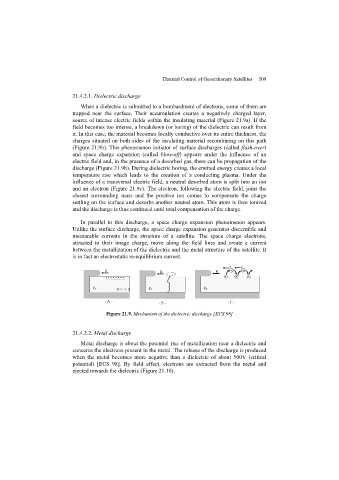Page 511 - Discrete Mathematics and Its Applications
P. 511
490 7 / Discrete Probability
Proof: From Theorem 6, we have
2 2
V(X + Y) = E((X + Y) ) − E(X + Y) .
It follows that
2
2
V(X + Y) = E(X + 2XY + Y ) − (E(X) + E(Y)) 2
2
2
2
2
= E(X ) + 2E(XY) + E(Y ) − E(X) − 2E(X)E(Y) − E(Y) .
Because X and Y are independent, by Theorem 5 we have E(XY) = E(X)E(Y). It follows that
2
2
2
2
V(X + Y) = (E(X ) − E(X) ) + (E(Y ) − E(Y) )
= V(X) + V(Y).
We leave the proof of the case for n pairwise independent random variables to the reader
(Exercise 34). Such a proof can be constructed by generalizing the proof we have given for the
case for two random variables. Note that it is not possible to use mathematical induction in a
straightforward way to prove the general case (see Exercise 33).
EXAMPLE 17 Find the variance and standard deviation of the random variable X whose value when two fair
dice are rolled is X((i, j)) = i + j, where i is the number appearing on the first die and j is the
number appearing on the second die.
Solution: Let X 1 and X 2 be the random variables defined by X 1 ((i, j)) = i and
X 2 ((i, j)) = j for a roll of the dice. Then X = X 1 + X 2 , and X 1 and X 2 are independent, as
Example 11 showed. From Theorem 7 it follows that V(X) = V(X 1 ) + V(X 2 ). A sim-
ple computation as in Example 16, together with Exercise 29 in the Supplementary
Exercises, tells us that V(X 1 ) = V(X 2 ) = 35/12. Hence, V(X) = 35/12 + 35/12 = 35/6
√
and σ(X) = 35/6. ▲
We will now find the variance of the random variable that counts the number of successes
when n independent Bernoulli trials are carried out.
EXAMPLE 18 What is the variance of the number of successes when n independent Bernoulli trials are per-
formed, where, on each trial, p is the probability of success and q is the probability of failure?
Solution: Let X i be the random variable with X i ((t 1 ,t 2 ,...,t n )) = 1 if trial t i is a
success and X i ((t 1 ,t 2 ,...,t n )) = 0 if trial t i is a failure. Let X = X 1 + X 2 + ··· + X n .
Then X counts the number of successes in the n trials. From Theorem 7 it follows that V(X) =
V(X 1 ) + V(X 2 ) + ··· + V(X n ). Using Example 14 we have V(X i ) = pq for i = 1, 2,...,n.
It follows that V(X) = npq. ▲
PAFNUTY LVOVICH CHEBYSHEV (1821–1894) Chebyshev was born into the gentry in Okatovo, Russia.
His father was a retired army officer who had fought against Napoleon. In 1832 the family, with its nine children,
moved to Moscow, where Pafnuty completed his high school education at home. He entered the Department of
Physics and Mathematics at Moscow University. As a student, he developed a new method for approximating
the roots of equations. He graduated from Moscow University in 1841 with a degree in mathematics, and he
continued his studies, passing his master’s exam in 1843 and completing his master’s thesis in 1846.
Chebyshev was appointed in 1847 to a position as an assistant at the University of St. Petersburg. He wrote
and defended a thesis in 1847. He became a professor at St. Petersburg in 1860, a position he held until 1882.
His book on the theory of congruences written in 1849 was influential in the development of number theory. His
work on the distribution of prime numbers was seminal. He proved Bertrand’s conjecture that for every integer n> 3, there is a
prime between n and 2n − 2. Chebyshev helped develop ideas that were later used to prove the prime number theorem. Chebyshev’s
work on the approximation of functions using polynomials is used extensively when computers are used to find values of functions.
Chebyshev was also interested in mechanics. He studied the conversion of rotary motion into rectilinear motion by mechanical
coupling. The Chebyshev parallel motion is three linked bars approximating rectilinear motion.

